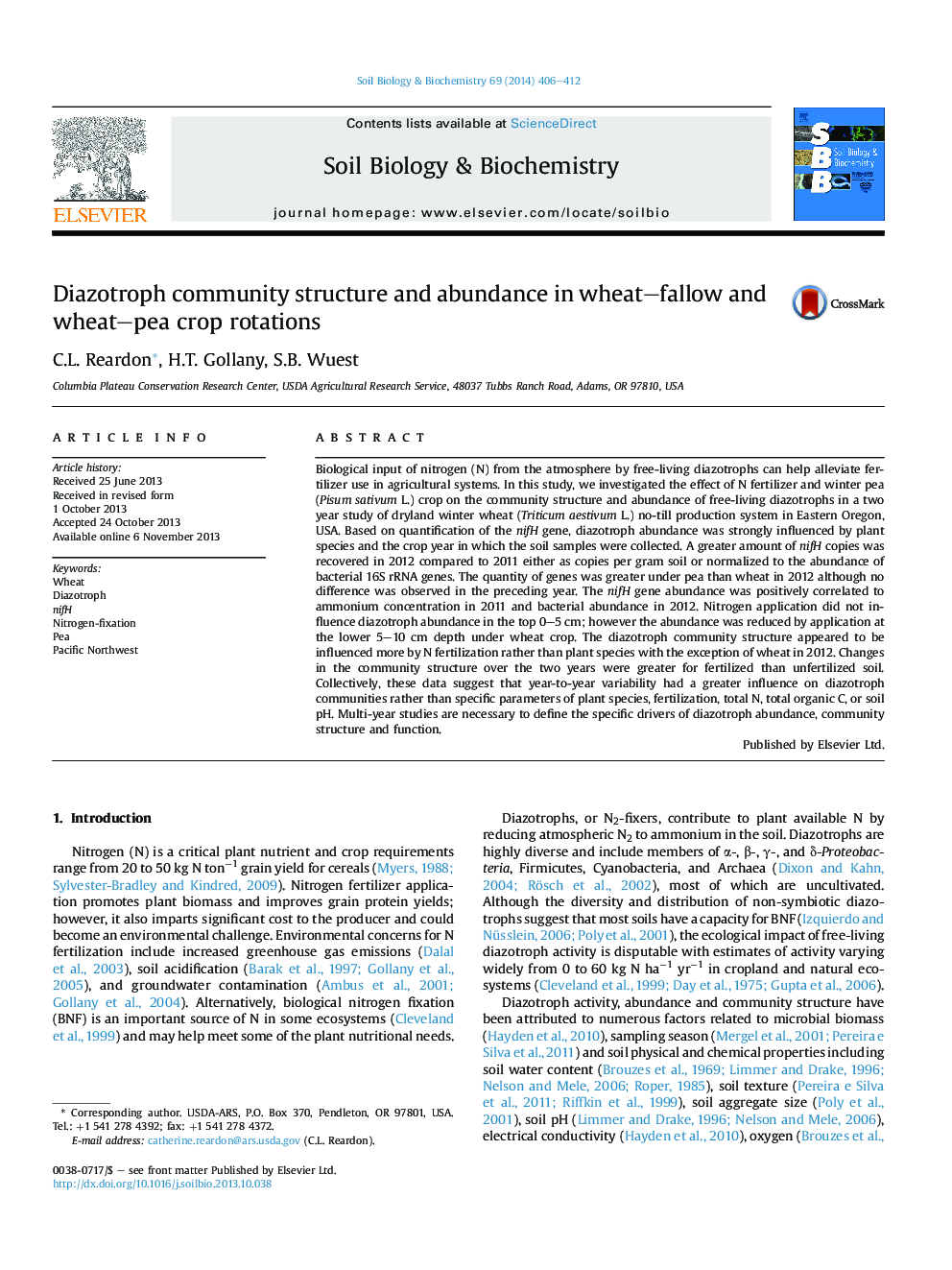| کد مقاله | کد نشریه | سال انتشار | مقاله انگلیسی | نسخه تمام متن |
|---|---|---|---|---|
| 2024751 | 1542615 | 2014 | 7 صفحه PDF | دانلود رایگان |
• Community structure rather than abundance was sensitive to fertilization.
• Diazotroph populations responded differently in the two years of sampling.
• Crop and cropping year significantly affected on nifH gene abundance.
• nifH abundance correlated to NH4 in the first year and 16S rDNA in the second year.
Biological input of nitrogen (N) from the atmosphere by free-living diazotrophs can help alleviate fertilizer use in agricultural systems. In this study, we investigated the effect of N fertilizer and winter pea (Pisum sativum L.) crop on the community structure and abundance of free-living diazotrophs in a two year study of dryland winter wheat (Triticum aestivum L.) no-till production system in Eastern Oregon, USA. Based on quantification of the nifH gene, diazotroph abundance was strongly influenced by plant species and the crop year in which the soil samples were collected. A greater amount of nifH copies was recovered in 2012 compared to 2011 either as copies per gram soil or normalized to the abundance of bacterial 16S rRNA genes. The quantity of genes was greater under pea than wheat in 2012 although no difference was observed in the preceding year. The nifH gene abundance was positively correlated to ammonium concentration in 2011 and bacterial abundance in 2012. Nitrogen application did not influence diazotroph abundance in the top 0–5 cm; however the abundance was reduced by application at the lower 5–10 cm depth under wheat crop. The diazotroph community structure appeared to be influenced more by N fertilization rather than plant species with the exception of wheat in 2012. Changes in the community structure over the two years were greater for fertilized than unfertilized soil. Collectively, these data suggest that year-to-year variability had a greater influence on diazotroph communities rather than specific parameters of plant species, fertilization, total N, total organic C, or soil pH. Multi-year studies are necessary to define the specific drivers of diazotroph abundance, community structure and function.
Journal: Soil Biology and Biochemistry - Volume 69, February 2014, Pages 406–412
